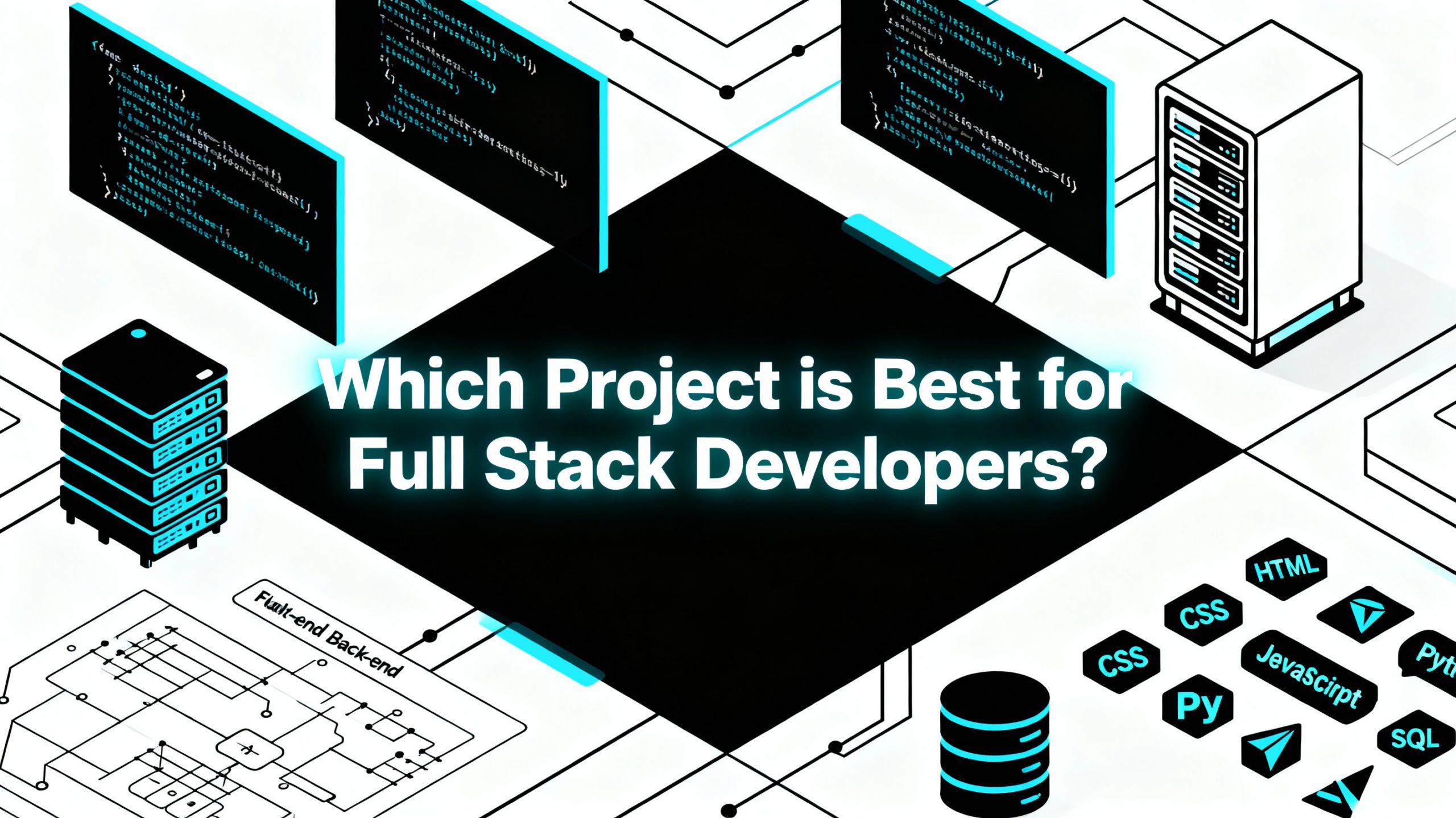Contents
 If you are a beginner aiming to become a Full stack developer, you’ve probably wondered: “What project should I start with first?” Choosing the right project is important because it helps you learn, build confidence, and create something you can proudly showcase.
If you are a beginner aiming to become a Full stack developer, you’ve probably wondered: “What project should I start with first?” Choosing the right project is important because it helps you learn, build confidence, and create something you can proudly showcase.
Who Should Be Doing Full Stack Developer Projects?
Working on projects helps a Full stack developer understand how frontend and backend work together in real applications.
- Beginners who want to see how front-end and back-end actually connect.
- Students who want something more than tutorials.
- Job seekers who want a portfolio that makes hiring managers nod.
- Freelancers who need real, client-ready experience.
Even if you’re just curious, building a project teaches way more than reading documentation.
What Makes a Full Stack Developer Project Really Useful?
Not all projects are created equal. Some will give you a lot of hands-on experience, and some… well, not so much. Here’s what to look for:
- It should be complete. That means front-end + back-end. Don’t stop halfway.
- It should feel real. If it could actually solve a user problem, even a small one, you’re learning the right things.
- Database integration matters. You’ll need to store, update, and fetch data.
- API usage is a plus. Learning how to pull data from other services is super practical.
- Good coding habits count. Think scalability, security, and clean code.
These qualities are what help a beginner grow into a practical Full stack developer.
Why Projects are So Important for a Full Stack Developer
You might wonder why I’m stressing projects so much. Here’s the truth:
- They give you hands-on experience in debugging and coding.
- They let you build a portfolio that actually impresses.
- They help you understand how everything connects, from what the user sees to what happens on the server.
- They make interviews easier because you can talk about real projects you built.
- They let you learn modern tools and frameworks naturally.
Projects help shape your thinking and problem-solving abilities as a Full stack developer.
Where Should a Full Stack Developer Start?
Start with something practical and not too complicated. Here are some common directions:
- E-commerce websites. Products, carts, checkout flows. It’s real-world and teaches a lot.
- Social media apps. Login, posts, comments—basic social functionality.
- Blogging or CMS platforms. Good for understanding content management.
- Booking platforms. Hotels, events, flights—anything that handles scheduling.
- Data dashboards. Charts and graphs using live or sample data.
These types of projects build the foundation required for a Full stack developer career path.
When Is the Best Time to Start?
- Start as soon as you know the basics. But here’s a practical breakdown:
- During your training: Immediately apply what you’re learning.
- Before interviews: Nothing impresses like a live project.
- Freelancing: Real projects = client credibility.
- Continuous learning: Keep experimenting with new frameworks or APIs.
How a Full Stack Developer Should Select the Right Project
A few suggestions for selecting the project that truly contributes to your personal development:
- Be aware of your skills. If you are a novice, then begin with an easy project.
- Try to choose the technology stack that you will be working with for a long time. Either it would be React, Node.js, Angular, Java, .NET, or Python.
- Keep scope reasonable. Small, complete projects beat giant, unfinished ones.
Make it useful. Does it solve a problem? Teach you something? Impress someone?
Include modern features. APIs, responsive design, security basics—it all helps.
Full Stack Developer Project Ideas You Can Actually Build
Here are some ideas I’d recommend:
- E-commerce site: Products, cart, checkout. End-to-end full stack learning.
- Social media app: Login, posts, comments. Teaches database + UI integration.
- Task management tool: Create, update, and delete tasks. Learn CRUD operations and notifications.
- Blogging platform: User roles, posts, comments. Great for understanding both front-end and back-end.
- Portfolio dashboard: Analytics, charts, graphs. Shows your skills and can be part of your portfolio.
- Start small. Add features gradually. That’s how you learn.
For UI components inspiration, you can refer to official React documentation.
Frequently Asked Questions:
Q: How big should my first project be?
A: Small but complete. Finishing something teaches more than starting a huge app that never gets done.
Q: Should I combine various technologies?
A: Limit yourself to one major stack, it could be a few supporting tools. Complicate things less.
Q: Will I be able to find a job because of my project?
A: Certainly. Finished practical works are highly appreciated by employers. Projects are more persuasive than diplomas.
Q: How do I showcase my work?
A: GitHub is your friend. Live demos, clear documentation, screenshots—all make your project shine.
Click here for Full Stack Developer